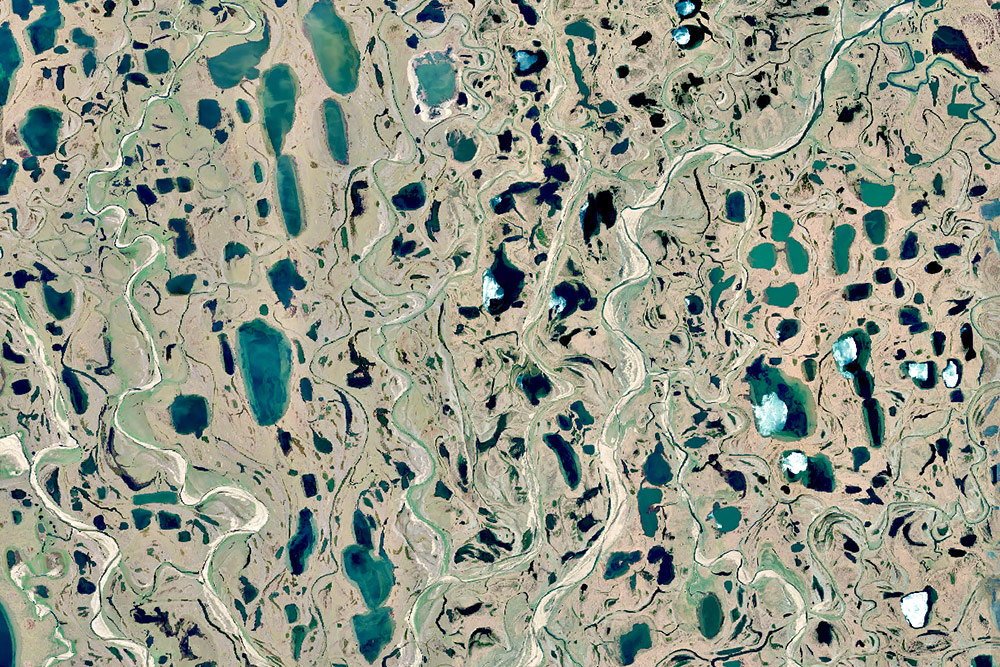
How Lakes are Shaping Arctic Permafrost Landscapes
Please note that our Stroy Maps are best viewed on a tablet in landscape mode, laptop, or PC screen!
Lakes are a typical feature of Arctic landscapes. Have you ever heard of »thermokarst lakes«, »drunken trees« or »talik« formations under lakes? In this story map you can find out what they are. You will also learn why there are so many lakes in the Arctic, how they form, and why some lakes grow their surface area while others disappear completely.
Lakes are not only abundant in your area. The map zooms in on different locations in the Alaskan, Canadian, and Siberian Arctic to show examples of such lake-dominated areas. Press the pause button to stop the animation. You can use the following buttons to navigate to individual locations:
Definitions
Thermokarst: The process by which characteristic landforms result from the thawing of ice-rich permafrost or the melting of massive ice. (van Everdingen, 1998)
Thermokarst lake: A lake occupying a closed basin formed by settlement of the ground following thawing of ice-rich permafrost or the melting of massive ice. (van Everdingen, 1998)
